RDR is a relatively small frame builder based in the mountains of Northern Italy. According to the website, RDR consists of the father (Vincenzo), his son (Nicolas) and one employee (Cristina).
The entire frame manufacturing process is done in the RDR factory in Italy. Carbon frame tubes are manufactured, cut and bonded together. Layers of carbon ‘bandage’ are applied to the frame and then it’s baked in the oven. The frames are hand-sanded and painted to the client’s specification and you can have any paint and graphics colour you want. The bike we tested is a very fetching bare carbon weave with flouro yellow graphics.
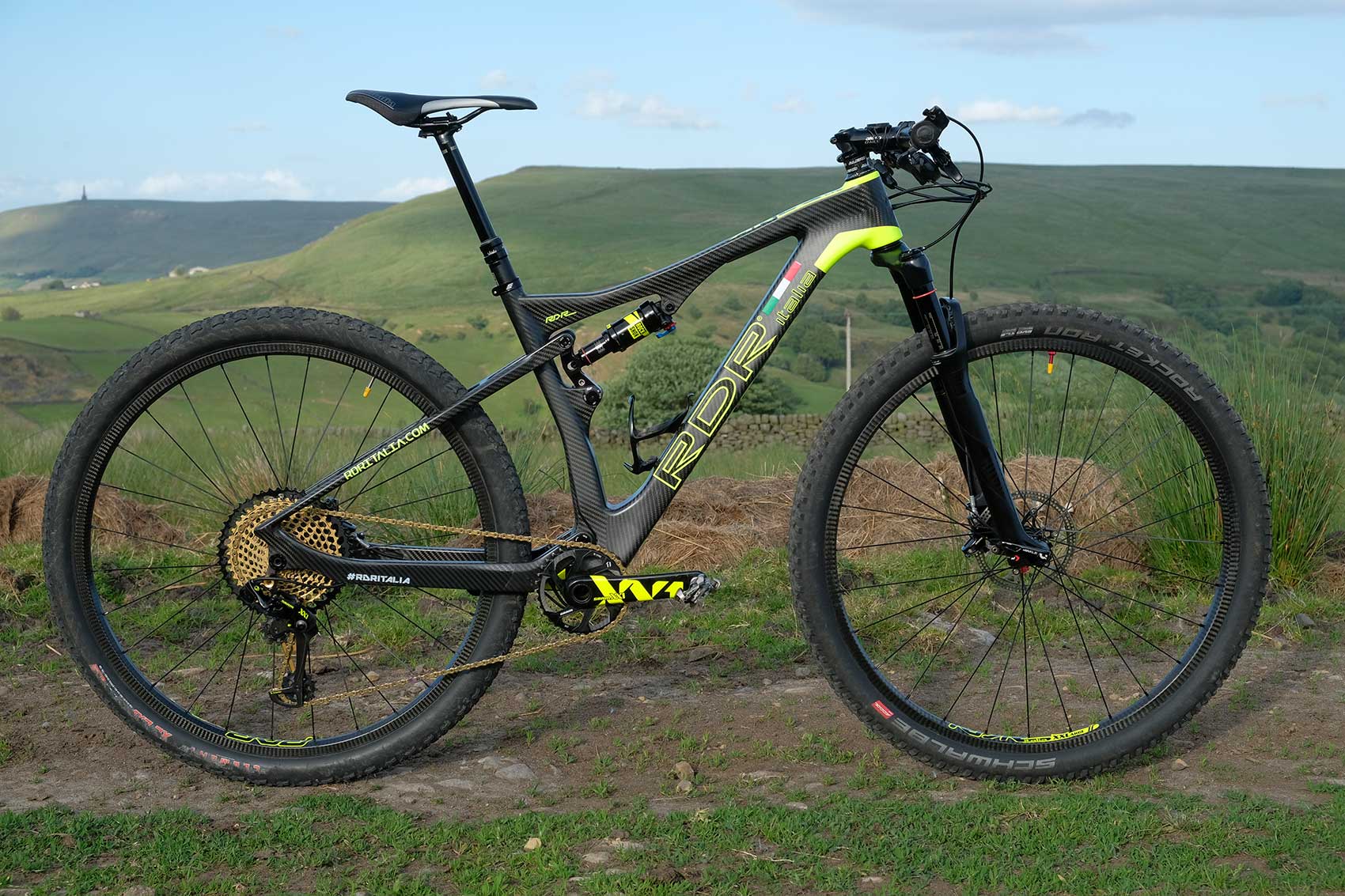
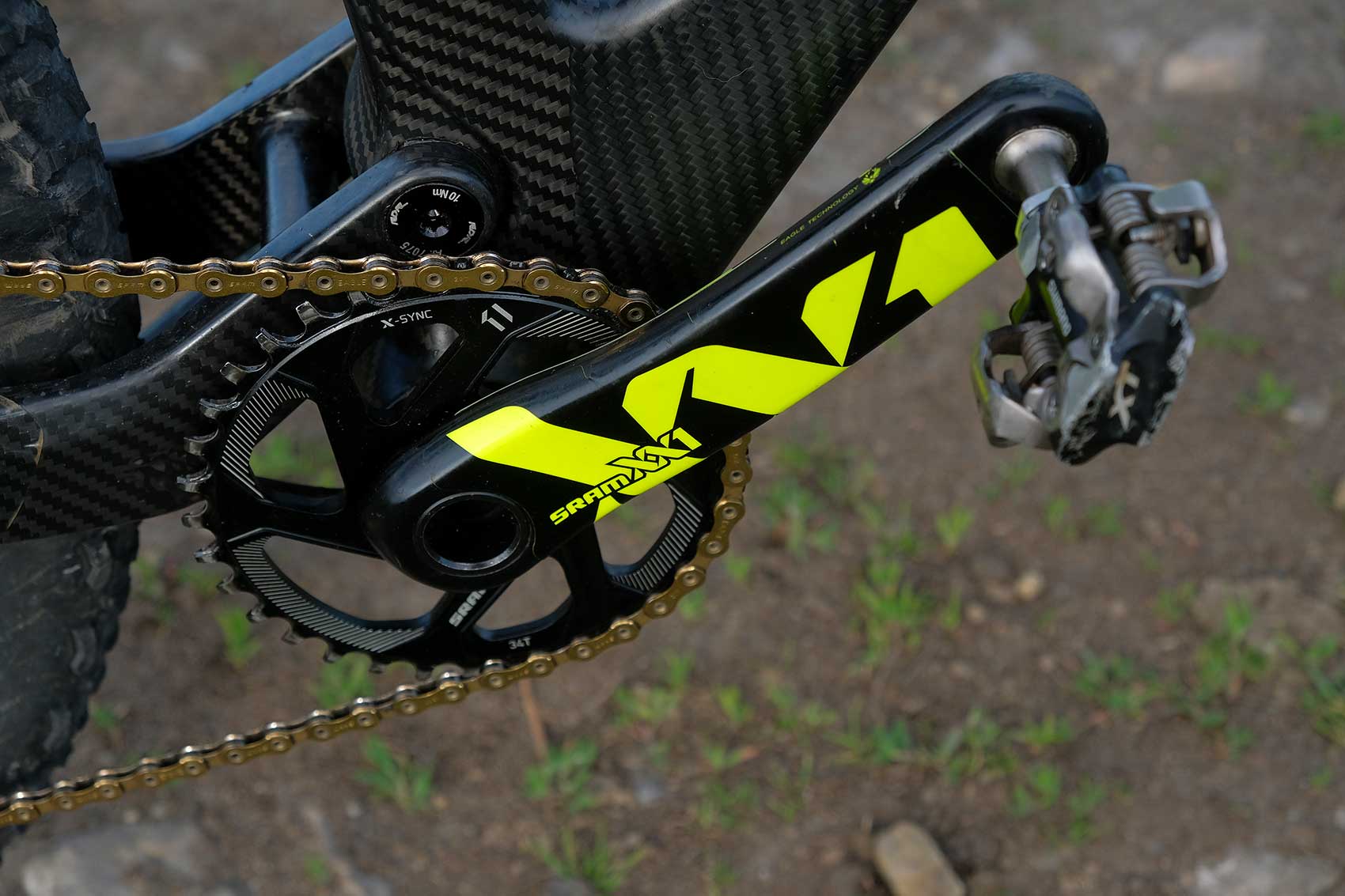
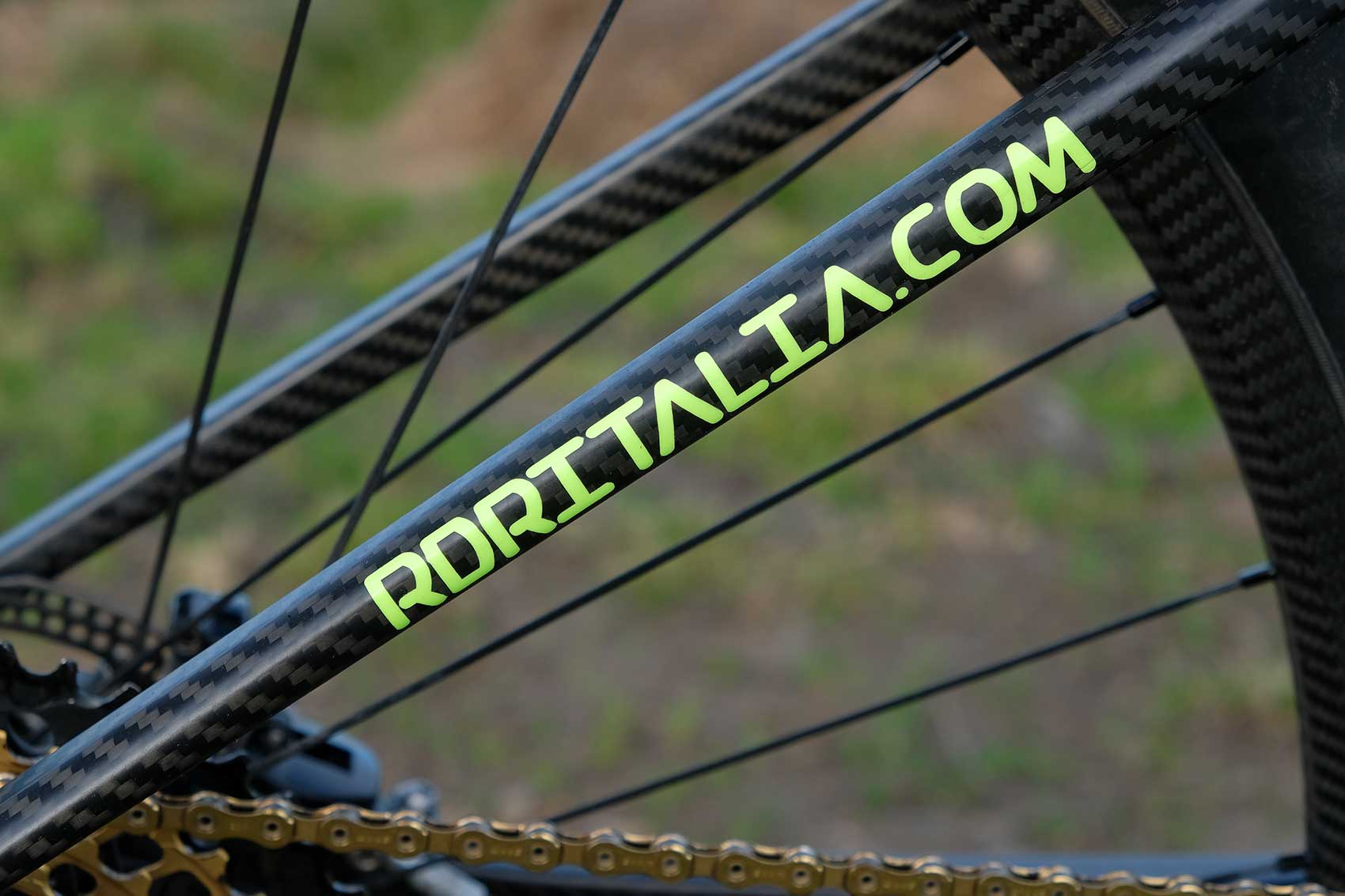
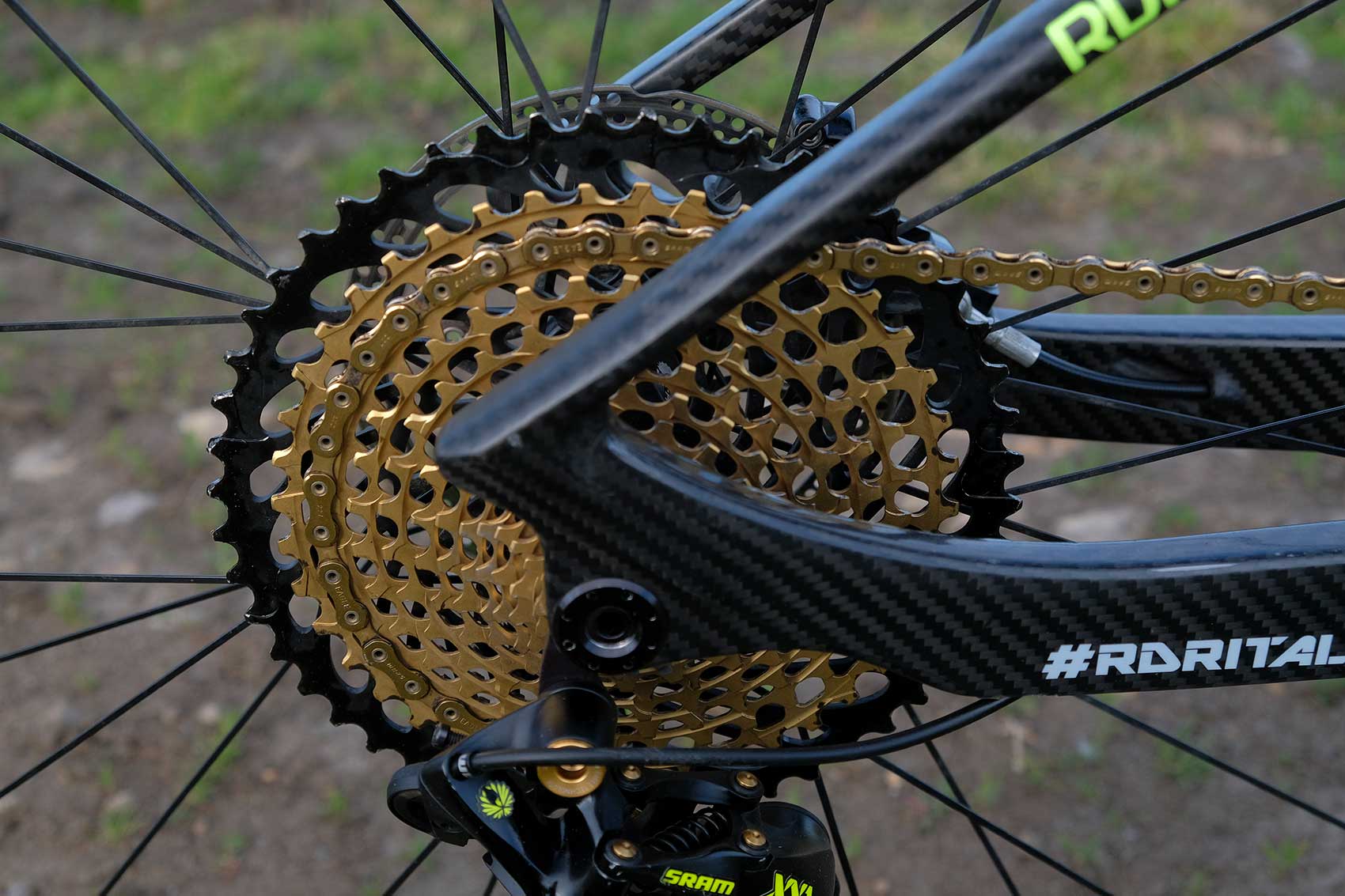
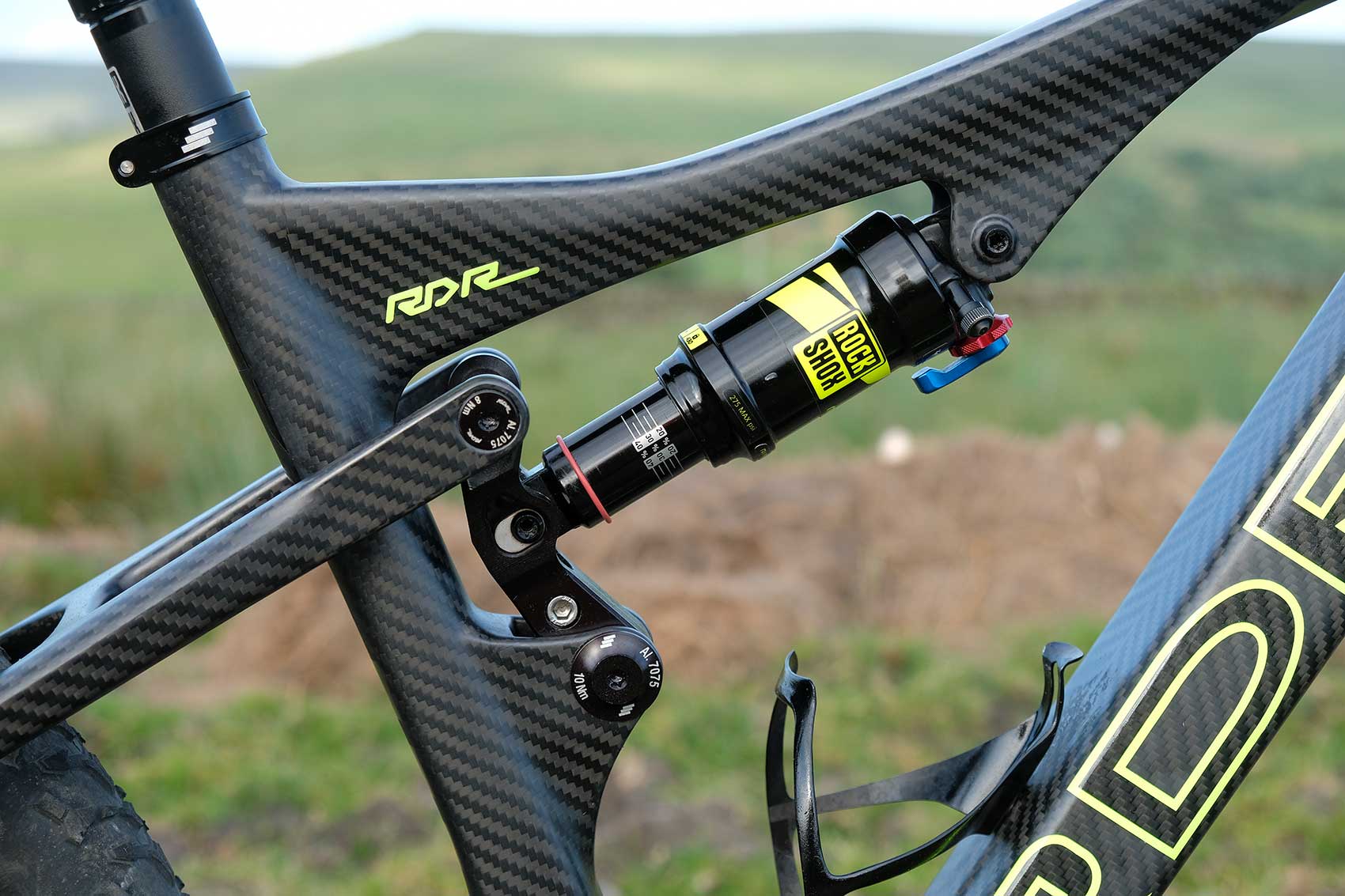
If you’re interested in buying one, RDR will invite you over to the factory for a tour, maybe a pizza, and if you buy one, I’ve heard that they’ll pay for your flights. You won’t get that down at Halfords.
I know what you’re thinking though, you’re thinking that 11 thousand euros is crazy money for a bicycle. Even a super-light, full suspension bicycle such as this one. You’d be right. 11 thousand Euro is a fantastically bonkers price tag for a mountain bike. It’s more expensive than a top-of-the-range Scott Spark 900SL and quite a lot more than the priciest Santa Cruz Blur – all these bikes are aimed at the pro (or wealthy)-level ‘go fast for a long time’ market, so the RDR has to be a very capable bike as well as having a whole sacco of exclusivity.
The Bike
The 100mm travel frame has a claimed weight of 1,570 grams, including bolts and the aluminium rocker. Our test bike came with a Rock Shox Monarch RL shock with the all-important three-position lock out lever. Up front is an utterly brilliant SID World Cup, also giving 100mm of travel. Both frame and fork are Boost-spaced with loads of room for big tyres, so if you get bored of going really fast you can fit some 27.5in Plus wheels and tyres.
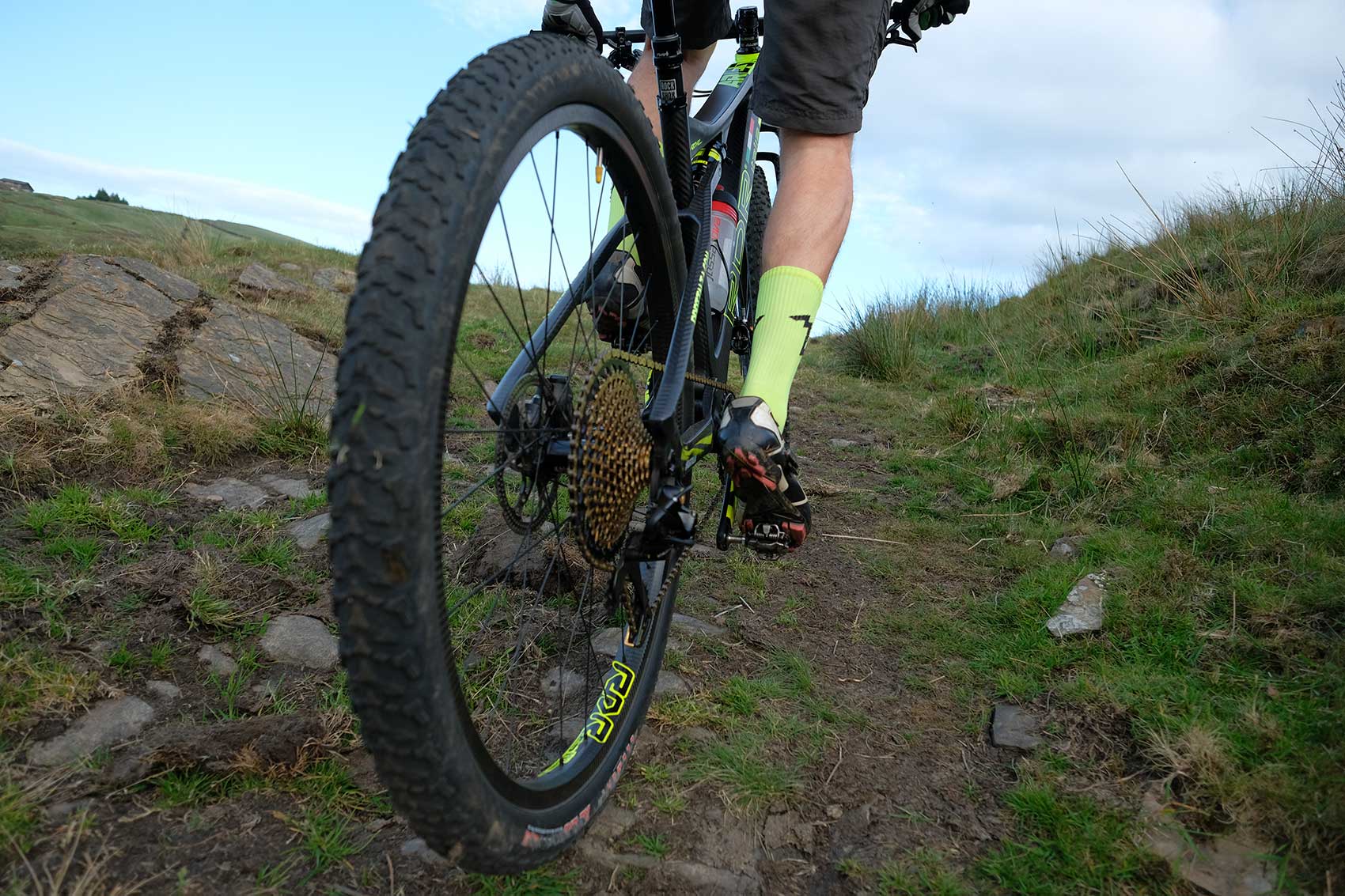
The rear shock is mounted on a small oval shuttle that can be unbolted and flipped over – this gives you the option of running a 70° or a 69° head angle.
Aside from the frame and fork, the specification of the Ares Limited is all the best kit that money can buy without getting into obscure boutique stuff that you can’t get spares for. Gears and chainset are SRAM XX1 Eagle. Brakes are SRAM Guide Ultimates. This one even had a Reverb dropper post, which adds some weight, but I can hardly ride a bike without one nowadays.
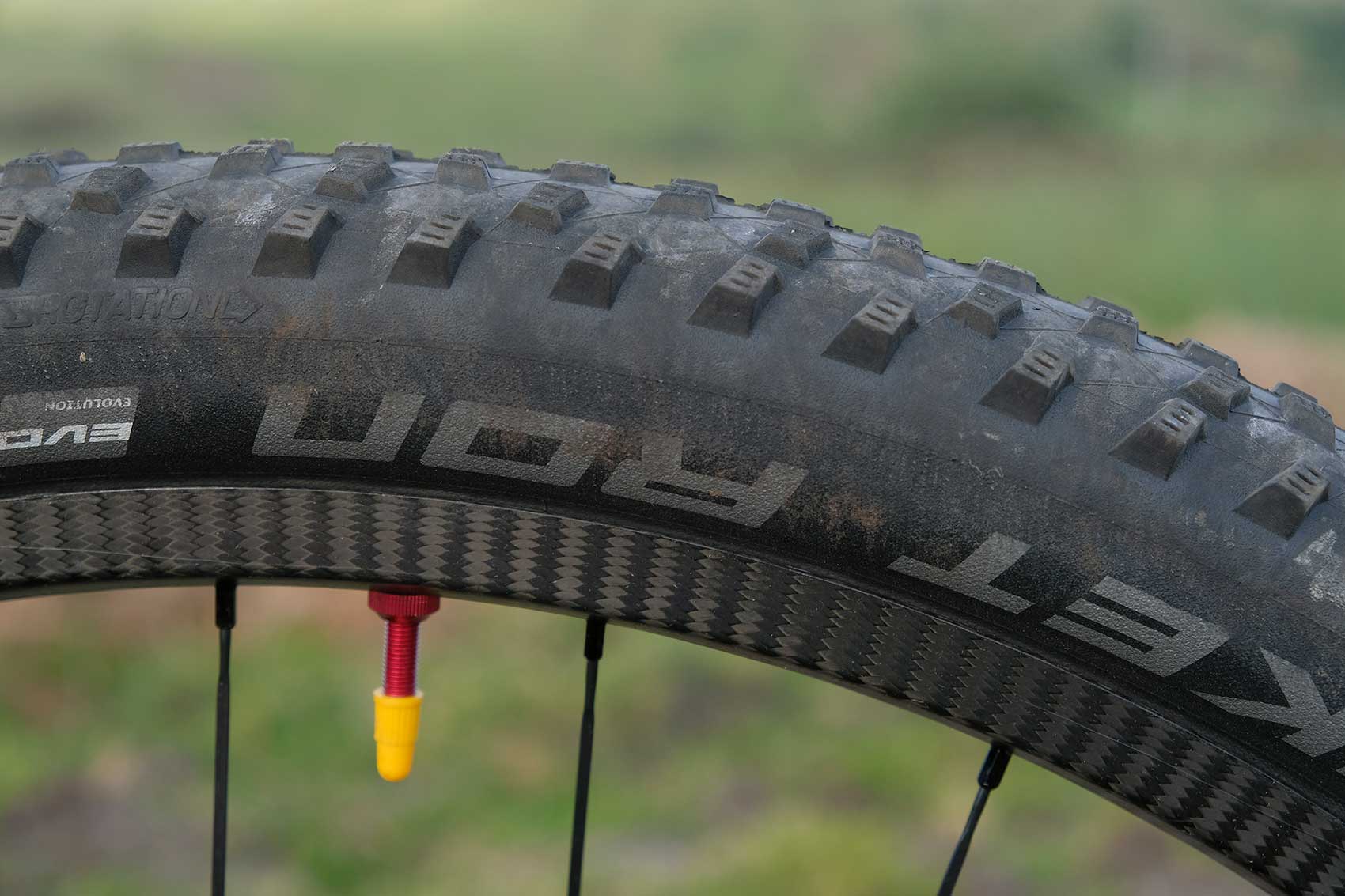
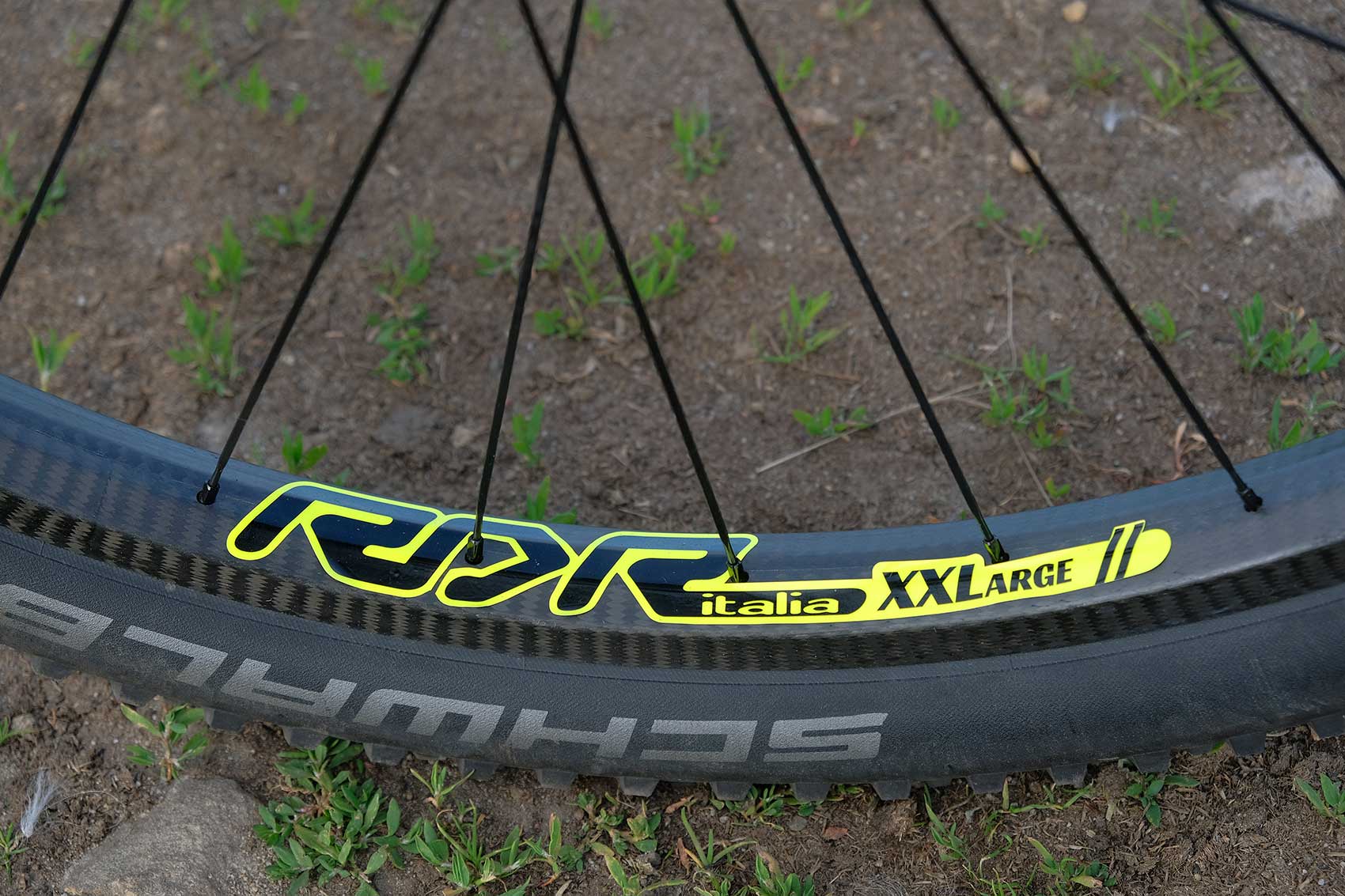
Wheels are RDR-branded and comprise carbon hubs, straight-pull bladed spokes and carbon rims with more of that lovely bare carbon weave finish. The hubs are nice and wide so chunky tyres (such as the Rocket Rons the bike came with) have a nice, squarish profile. It was quite difficult to get a tubeless tyre to seat on the rims though, possibly the width meant that the oomph of a compressor rather than a ‘manual’ tyre inflator would be needed.
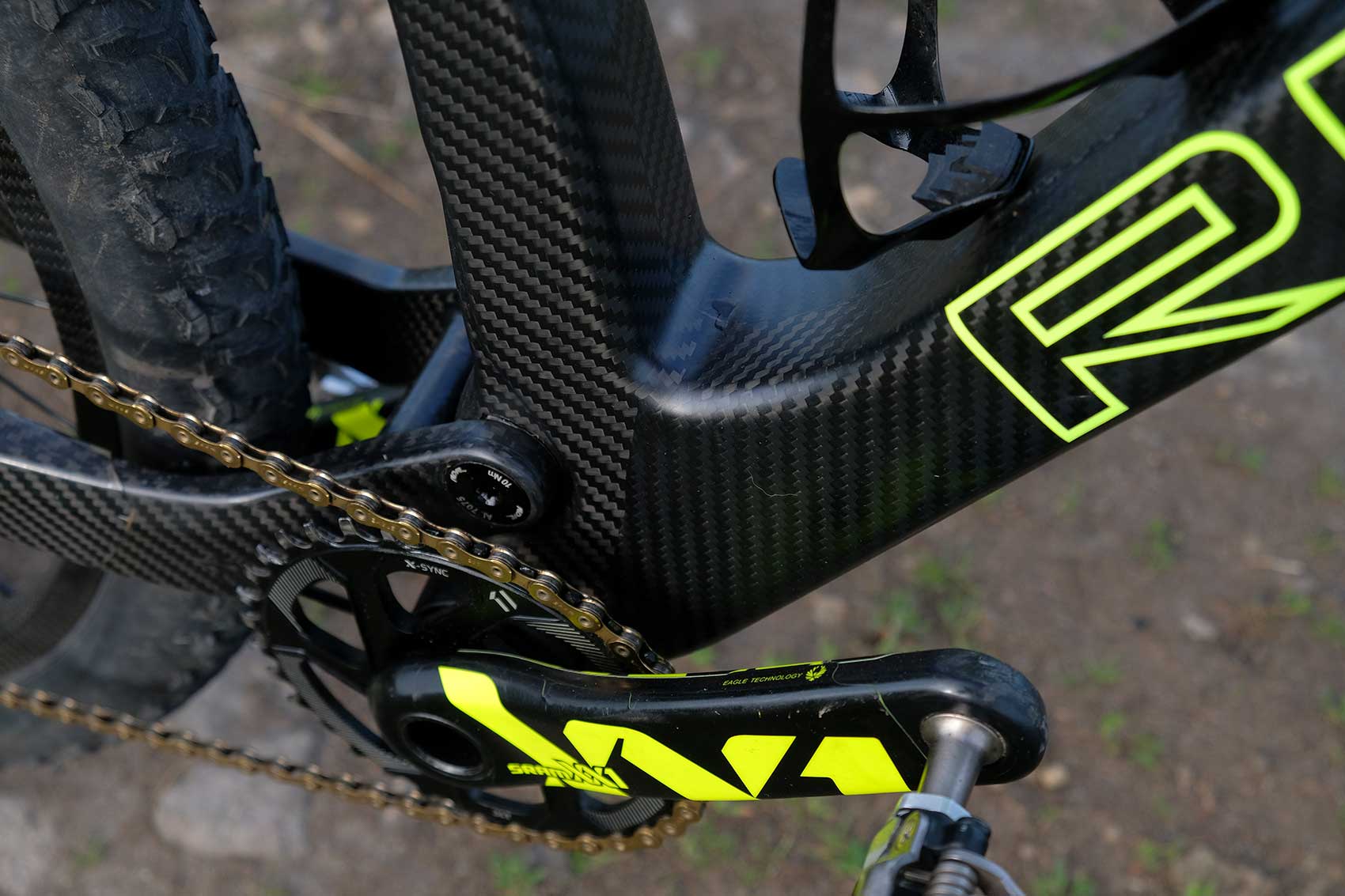
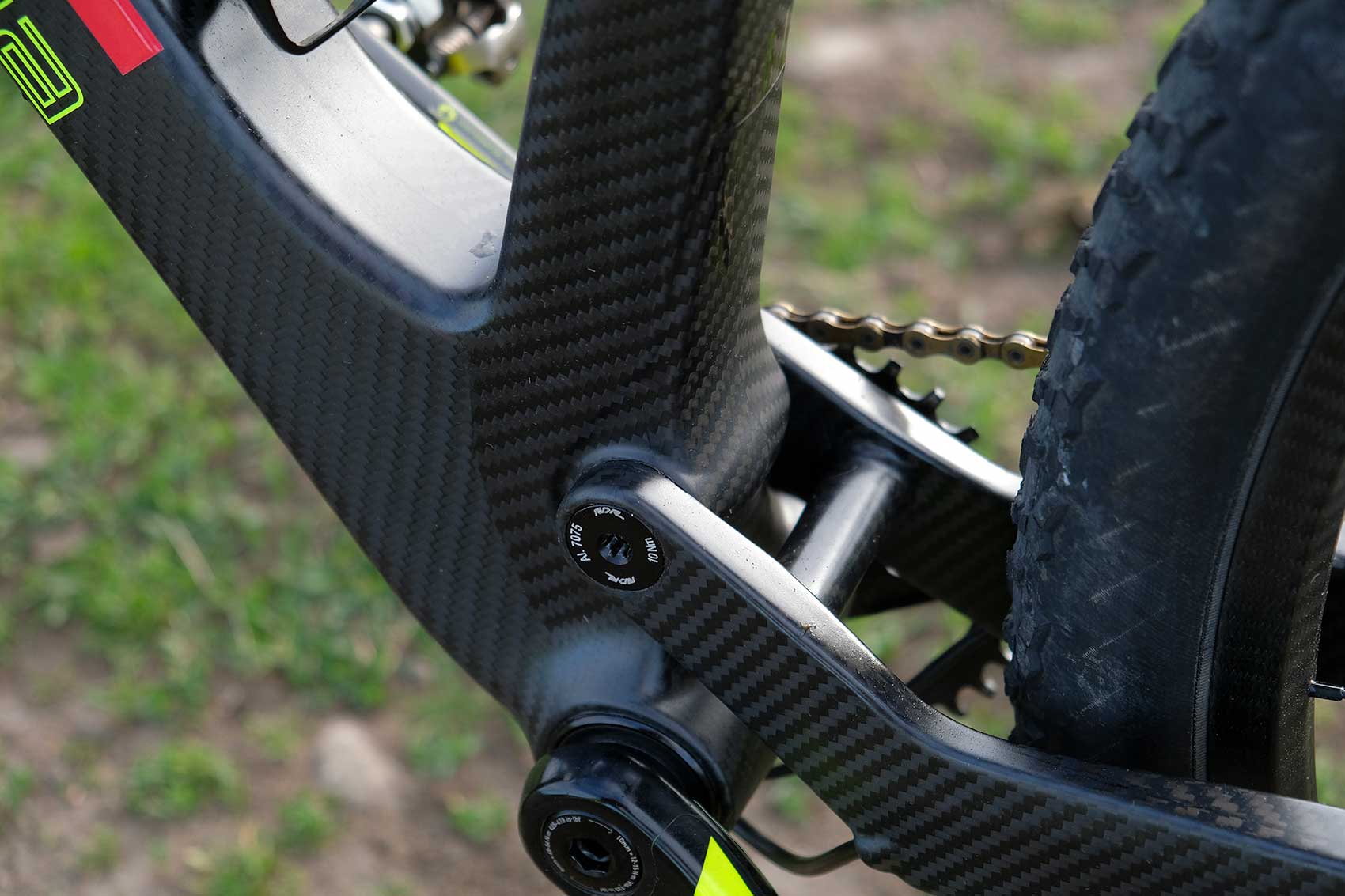
All the cable routing was near-perfection. Each cable was the perfect length, nothing creaked or rattled, nothing rubbed on the frame and the machined cable routing ports at each side of the headtube probably warrant a review all their own. In short, in the two months I rode this bike nothing about it (apart from the tubeless tyre mounting I’ve already mentioned, which I’m told has been sorted on a revised version of the rim) was irritating.
Finishing kit is all ‘Alero’ branded, which I’d never heard of until I looked them up. It all looks nice enough – this bike had an Alero stem, grips, headset and carbon handlebars. Production bikes will come with an Alero carbon seatpost too rather than the Reverb dropper on our test bike.
If you’re obsessed with light weight and you’re also comfortable with the law of diminishing returns, you could probably shave even more grams off the overall weight by chucking even more money at the finishing kit, saddle and tyres.
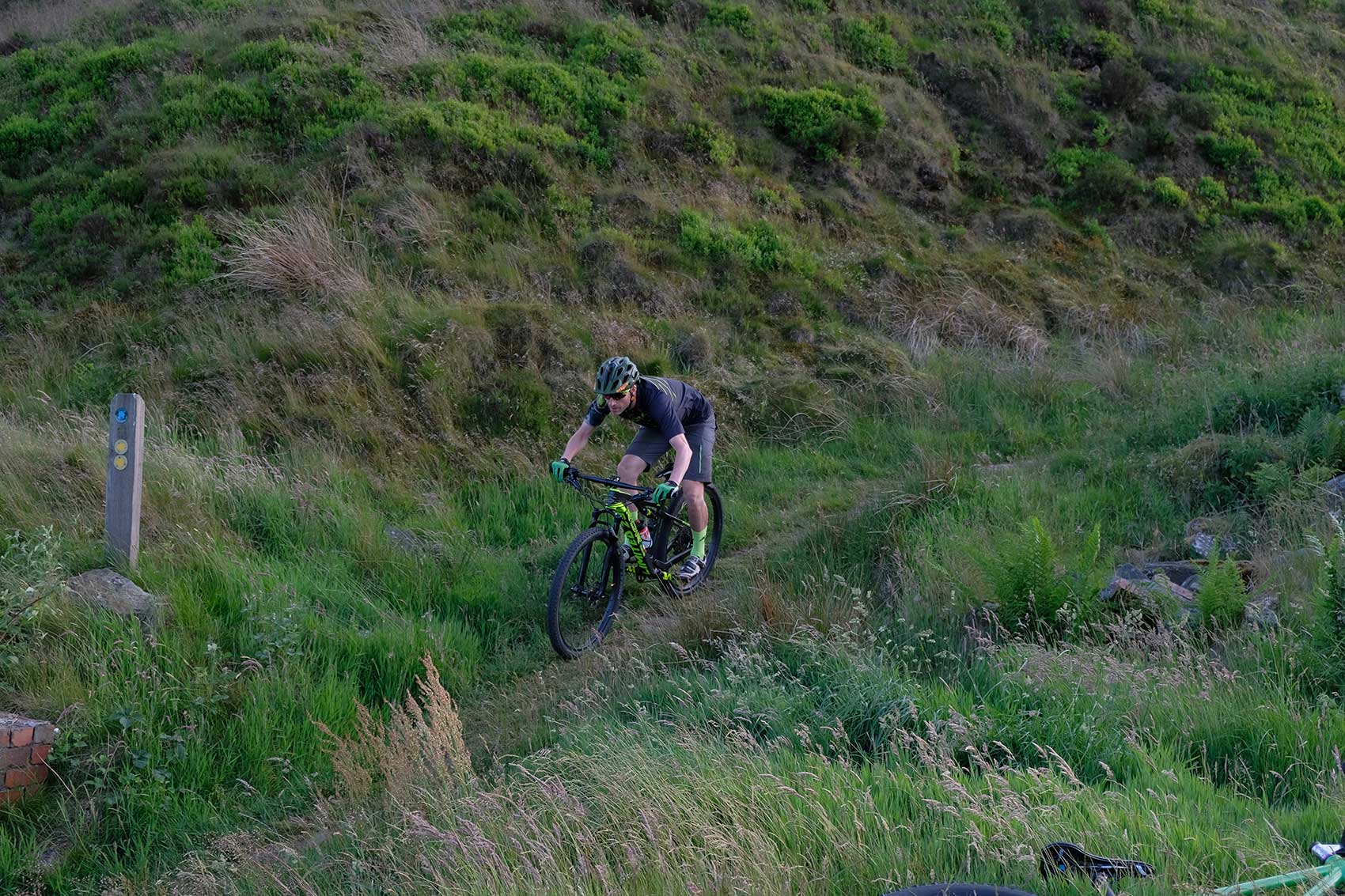
The Ride
As you would probably expect, The RDR climbed exceptionally well and rode back down again just as brilliantly. The bike’s light weight (and arguably the presence of the Reverb) meant that changing direction at high speed on narrow trails was as exhilarating as it was an absolute doddle. The frame is mega-stiff and the rigidity of the carbon rims mean that it’s really easy to hold a line over pretty-much any moderate-sized rocks or slippery roots. That same stiffness contributes to some quite startling climbing ability – the sort of bike that even though the climb is really hurting, pushing even deeper becomes almost addictive just to see how fast you can go.
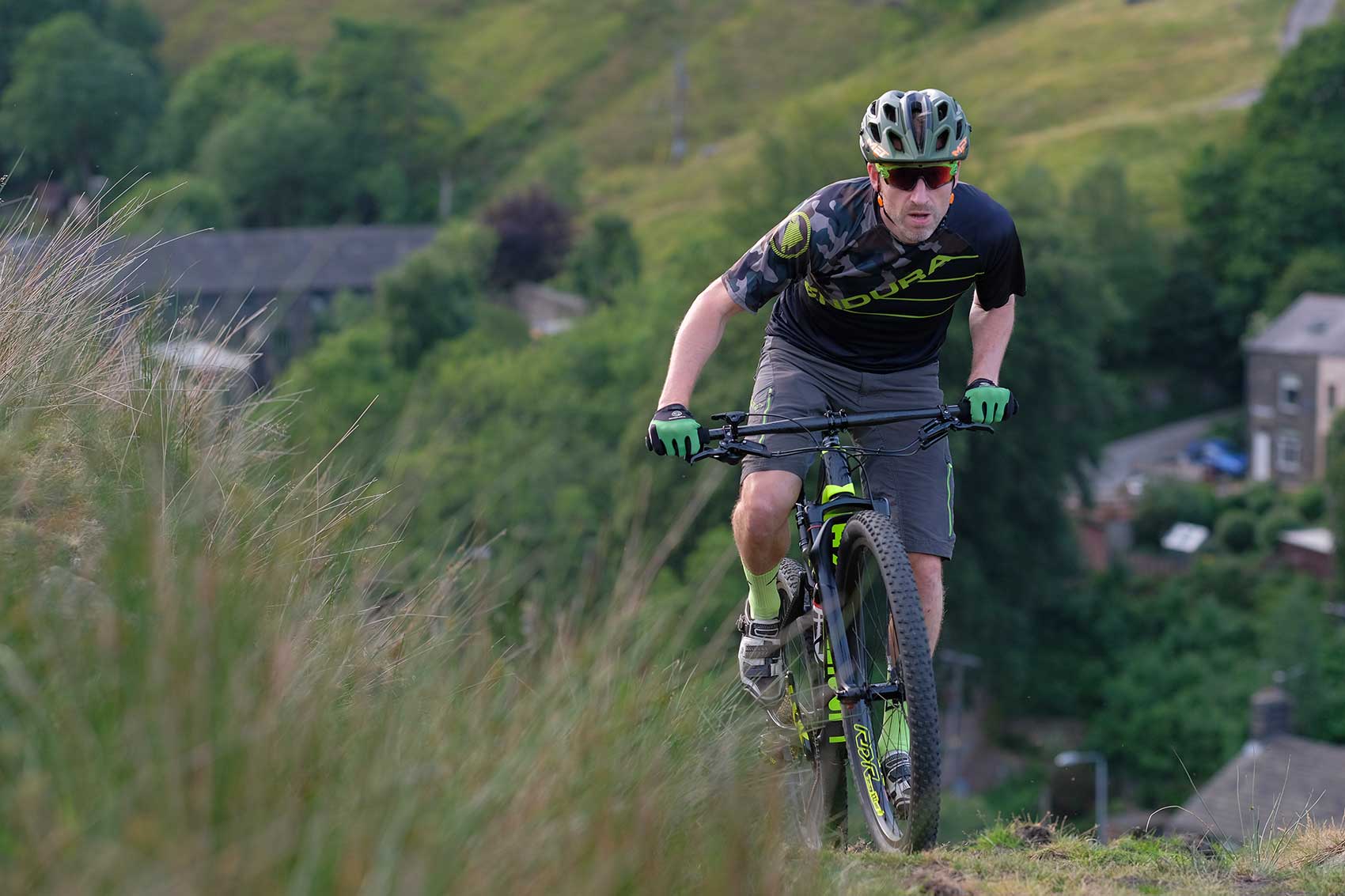
Things become even more serious with the head angle set to 70° – climbing was noticeably swifter too but 69° is where the fun kids hang out with this bike.
Despite the RDR’s overtly competition-led design, the bike is a LOT of fun to ride. In the world of leading-edge XC and marathon full suspension bikes, designed to cope with high speeds and the demands of riders for ever- more technical and rougher courses, the RDR Ares more than holds its own, but that also means that it’s brilliant for ‘playing out’ on too (see earlier comment about the 69° head angle).
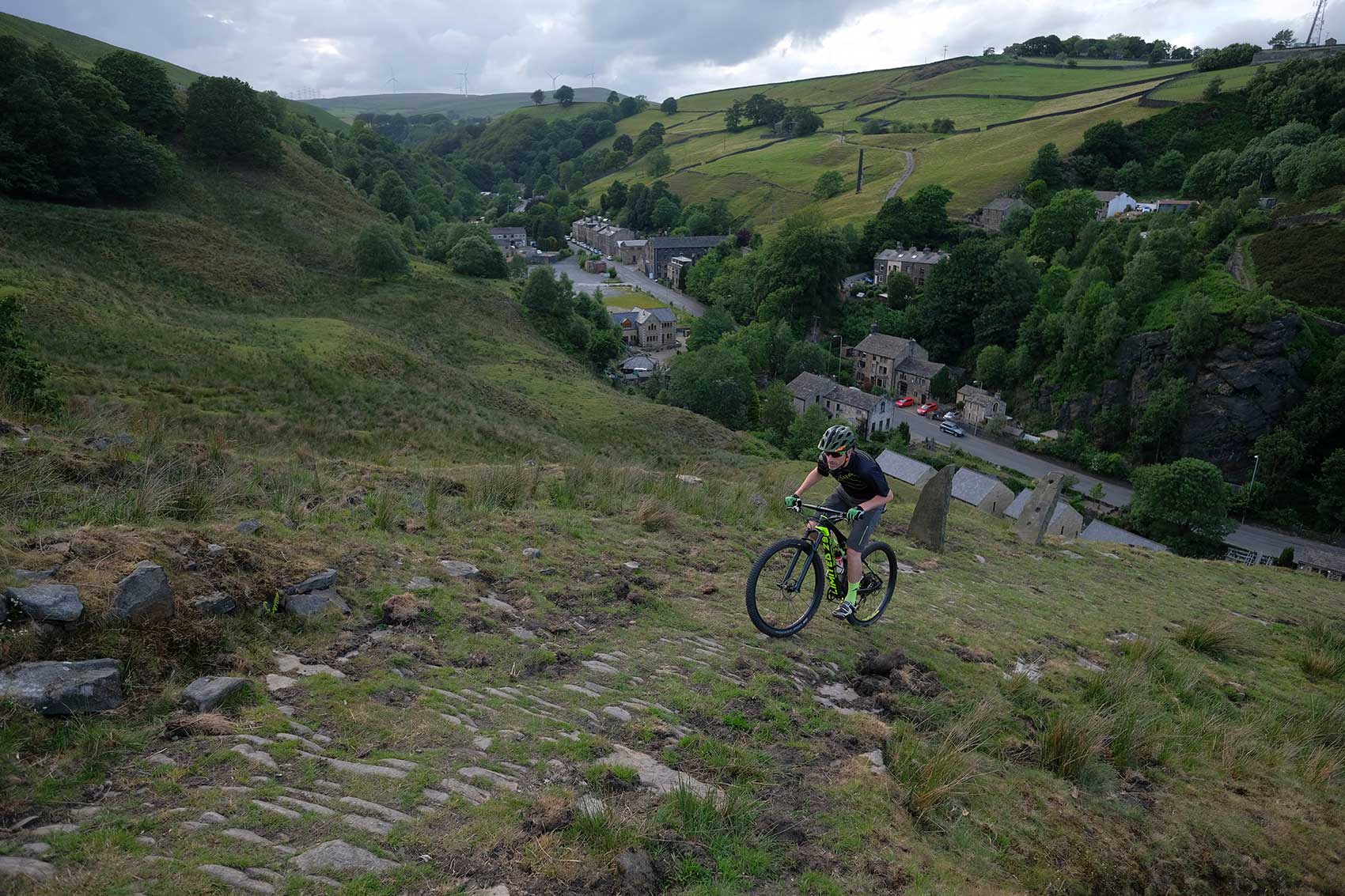
The only situation it did seem to struggle slightly was slow-speed, twisty trails where the bike starts to feel quite long, a bit like 29ers did a few years ago when everyone was suspicious of them and was going on about clown wheels. You need a bit of weight-shifting and maybe some funny face-pulling to get around some really tight corners.
If you’re thinking of buying an Ares in pursuit of some sort of new and ground-breaking riding experience, you might be a little bit disappointed. There’s nothing new here in that the bike does what it’s told with laser-guided precision and you could arguably can get that kind of a bike elsewhere, possibly for less money. If you’re fast and skilled, it’ll be ace and you’ll probably stand a chance of winning stuff on it. If you’re not-so fast and less-skilled, it won’t kill you and you’ll still have a lot of fun.
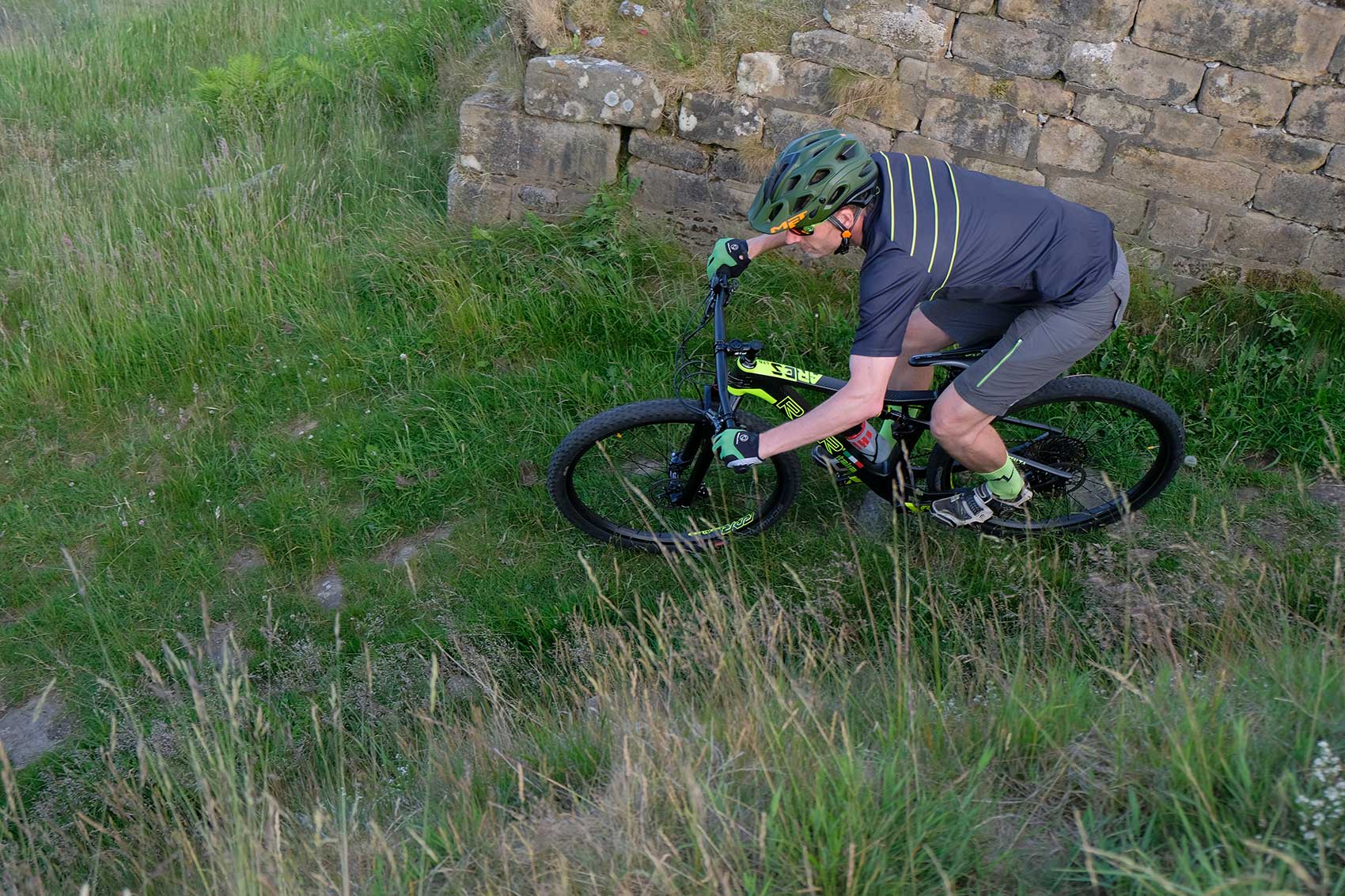
Three things that could be improved
- It can be tricky to get a tyre seated on the wide rims without the use of a compressor. I couldn’t get a couple of different tyres to seat properly with either a Bontrager Flash Charger or a C02 inflator, so that could have been a problem in a race situation.
- At slow speeds, the bike just feels a bit bigger than I wanted it to. It seemed to be a particular handful when negotiating slow-speed corners, which was a minor issue with 29ers some years ago.
- The rear shock needed a remote lockout lever. Reaching down to mess with your shock is tricky enough when you’re trying to hit Mach 2, it’s REALLY tricky trying to get the Monarch’s fiddly little three-position lever into the right place in a hurry.
Three things that I loved
- The Ares Limited looks amazing in all its nude carbon and flouro yellow loveliness. And you can have pretty much any colour you want. Even less chance of turning up for a ride and someone else has got the same bike.
- It’s a stonkingly-good bike for climbing hills, especially really bumpy and/or rocky ones. But the best bit is that this doesn’t seem to be to the detriment of descending ability. Granted, a heavier bike would probably feel a bit more stable going downhill but you could ride the Ares all day in big hills, get really knackered and it’d behave itself.
- Nobody else has got one.
Overall
Big price tag or not, the RDR Ares Limited is A Bloody Good Bike and it’s worth remembering that lower-specification models are available if you’re on a normal wage with mouths to feed.
If you’re considering purchasing this top-of-the-line model though, you’re going to want to be reassured that it’s a decent bike (which it is) but you’re probably just after something that hardly anyone else has got.
And that’s fine. It’s undeniably something different, a talking-point and a bike that stands out. In fact, at the time of writing, there are only fifty Ares Limiteds in existence. Get yours painted in a mad colour and you may end up with something unique.

RDR Ares Specifications
- Frame // High Mod Toray T800 / T1000 carbon, 100mm Travel
- Shock // RockShox Monarch RL
- Fork // RockShox SID World Cup, 100mm travel
- Hubs // RDR, 110x15mm Front & 148x12mm Rear
- Rims // RDR, Carbon Fibre
- Tyres // Schwalbe Rocket Ron EVO 2.25in Front & Rear
- Chainset // SRAM XX1 carbon, 34t X-Sync 2 Chainring
- Rear Mech // SRAM XX1 Eagle, 12-Speed
- Shifter // SRAM XX1 Eagle, 12-Speed
- Cassette // SRAM XX1 Eagle, 10-50t, 12-Speed
- Brakes // SRAM Guide Ultimate
- Stem // Alero, 90mm Long
- Bars // Alero Carbon, 760mm Wide
- Grips // Alero, Foam
- Seatpost // RockShox Reverb
- Saddle // Selle Italia SLR
- Size Tested // Medium
- Sizes Available // XS, S, M, L, XL
- Weight // 10.27 kg / 22.66 lb






Things become even more serious with the head angle set to 70° – climbing was noticeably swifter too
O really?
Or, buy an UNNO .
“Or, buy an UNNO .”
maybe we should get one in and compare, eh?